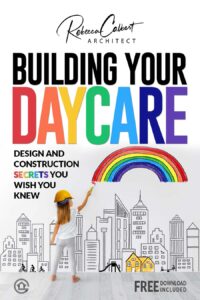Tips for Toy Storage
When you have kids, there will come moments in your life when you feel as if your home has been taken over by toys. While I can’t promise you’ll never be pulling your hair out about the number of toys in your home, I can give you some tips on how to keep them from taking over.
Bookcases For Toys
When it comes to toy storage, you need to find easy options for your kids to access. If they can’t quickly put things away, they just won’t bother. This means you want storage solutions that are at kid level. It turns out that bookshelves can be an excellent option for storing toys. If you have some low bookshelves, you can easily pop toys on the shelves. As your kids get older, you can start to swap the toys for books so they’ll be useful for the long run.
Open Storage Bins
To go along with the bookshelves, I recommend some open-top storage bins. If you get ones that fit the shelves, you can store all the smaller toys on the shelves as well.
The reason for choosing open top storage bins is simply that they are easier for kids. If they have to take a lid off the storage bin before putting the toys away, they just won’t. I know it looks neater when there are lids on, but if you want to train your kids to do the tidying, then you might have to make this little sacrifice.
Sort By Type
It can be tempting to just have one big toy pile/bin. It seems like it’s the easiest option. After all, you just throw everything in one box, and you’re done. However, the downside to this is that toys get lost. Plus, your kids will empty everything out every time they play.
I suggest sorting toys by type. For instance, keep all the wheeled vehicles in one box and all the baby dolls and stuffed toys together (toy hammocks are an excellent option for this). Depending on your kids, you might just want to mix up all the construction toys together. Or if you’re going to keep some things, like the legos, separate, you can get some great storage options especially designed for them.
The other benefit of sorting toys in this manner is that it teaches your kids organizational skills. Being able to sort and organize is a skill that they will need to be ready for school.
Add Picture Labels
There’s no point in having an organizational system if you’re the only one who knows how it works. You’ll just end up doing all the tidying. So, make it easy by using labels. Your kids will quickly understand where to put their toys if there are pictures to follow.
For boxes that need to be packed in a certain way, take a photo. With the picture on the front, it’s clear what should go in the box and how.
Ditch The Packaging
Many toys come in some very nice boxes, and it’s tempting to just keep those toys and puzzles in the container because it looks nice. However, they take up a lot of room. They’ll get battered, and pieces will go missing. Instead, why not transfer them to other storage options.
For puzzles, you could put all the pieces into a plastic sandwich bag or a plastic wallet. Then cut out the picture and stick it on the front. Suddenly they take up a lot less space, and it’s much easier to put them away.
Use The Space Under Beds
The space under beds is a great place for storing toys. There are two ways to make the most of this space. You can get under bed storage boxes. These just roll out and have flip-top lids.
The other option is to get raised beds. These can be great for giving kids space for their toys and a place to play as well. If your kid likes forts, then this is perfect. You can sneak some storage in, along with some cushions and blankets. Now they have a contained play space that they’ll want to keep their toys in.
Periodically Edit
Once you have a system in place, it’s essential to revisit it every now and then. I recommend every 6 months. Alternatively, just wait until you notice the toys beginning to escape your storage system. When this happens, it’s time to curate and edit.
It’s a great idea to get your kids involved in this process. Get them to decide which toys they don’t play with anymore. Then you can throw out the broken ones and donate the one with life left in them. It’s not only a chance to clear out your home; it’s also a chance to teach your little ones the value of giving.
-This article was written by Rebecca Calbert.
Rebecca is a licensed architect with over 30 years of experience. She owns and operates an architectural firm, Calbert Design Group, and educates her clients through the commercial real estate development process with online content at SaveOnBuilding.com. Rebecca’s “purpose” is to educate small business owners and protect them from what they don’t know.


